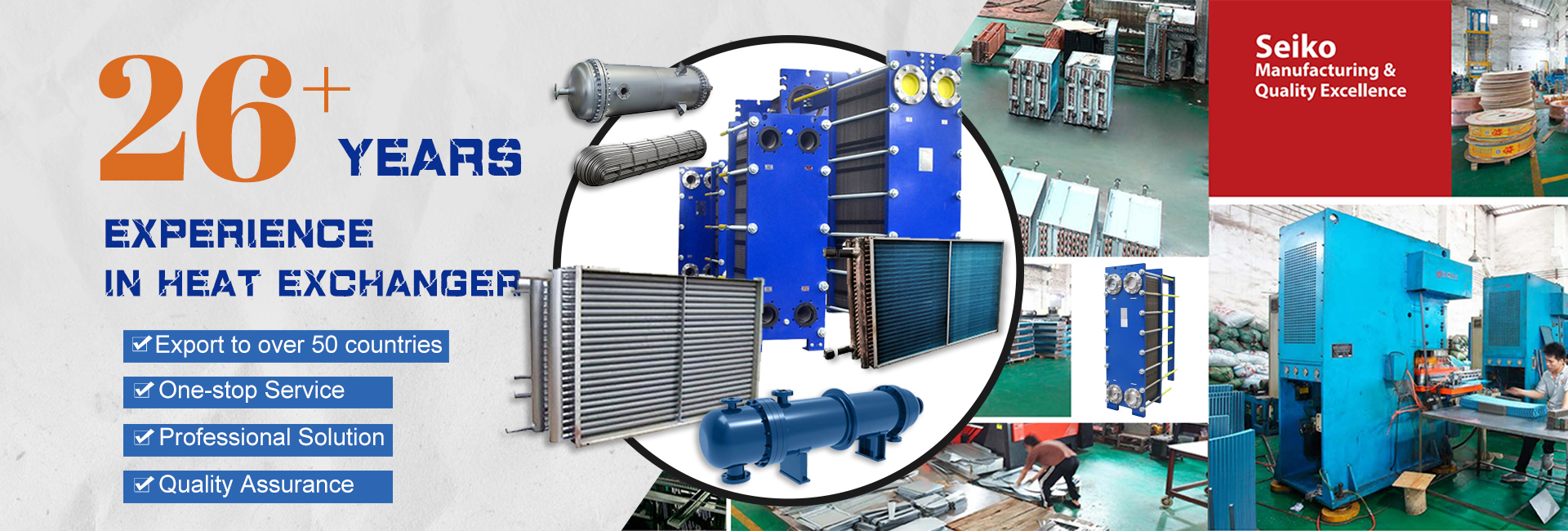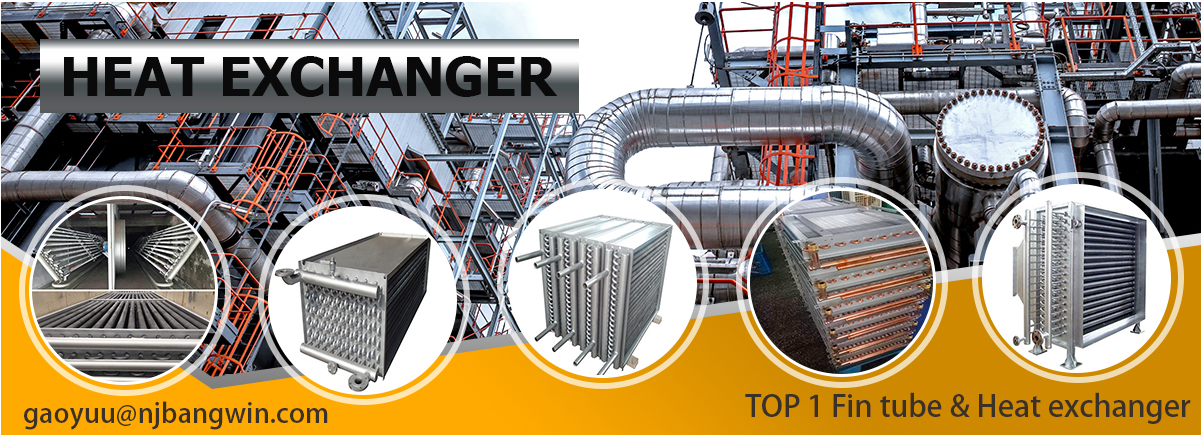
Введение
A конденсатор is an indispensable теплообменник widely used in HVAC equipment, refrigerators, power stations, and industrial equipment to remove the heat and convert the vapor into liquid. It is an important part of the vapor absorption system, heat pump system, and solar water heater, which can ensure the stable operation of the system, save energy, and improve the overall efficiency of the equipment.
Что такое Конденсатор?
A конденсатор is a heat exchange device that absorbs the latent heat of vapor (refrigerant or steam) and makes the vapor condense into a liquid. The heat absorbed by the конденсатор is usually transferred to the cooling medium (air or water), and it plays an important role in the cooling cycle, power plant, and industrial production.
Принцип работы
- Hot vapor enters the конденсатор and flows through the tube bundle (channel) in the form of high-pressure and high-temperature gas.
- The metal surface (tube or plate) in the конденсатор conducts heat from the hot vapor to the cooling medium (air or water) for heat dissipation, and the конденсатор constantly absorbs the latent heat of vapor.
- Сайт конденсатор absorbs the latent heat from the high-pressure vapor and cools the vapor to its saturated temperature, causing the vapor to condense into a liquid.
- The liquid in the конденсатор can be returned to the system for further use or discharged.
Технические детали
Технические характеристики | Typical Range / Options |
Конденсатор Types | Air-cooled, water-cooled, evaporative |
Рабочая температура | –40 °C to +150 °C |
Материалы | Copper, stainless steel, carbon steel, aluminum |
Capacity Range | 1 kW to several MW depending on application |
Приложения | HVAC, refrigeration, power generation, process cooling |
Основные характеристики
- High heat transfer efficiency and stable performance
- Suitable for various cooling cycles and industrial processes
- Air-cooled, water-cooled, or evaporative конденсаторs can be customized
- Compact structure and easy to install and maintain
- Durability and corrosion resistance to harsh operating environments
Преимущества
- High Efficiency – Конденсатор can quickly and efficiently remove heat from the vapor, which helps to ensure the stable operation of the system
- Energy Saving – Конденсатор can save energy and improve the energy efficiency of the equipment
- Flexible Design – Конденсатор is suitable for different industries and applications and has a wide range of uses
- Low Maintenance – Конденсатор has a simple structure and long service life, and the maintenance and maintenance are simple and easy
- Compact Size – Конденсатор is small in size and easy to install, and the installation is also space-saving
Промышленное применение
- HVAC Systems: Central air conditioning, ventilation systems, and so on.
- Refrigeration Systems: Cold storage, ice machines, chillers, and so on.
- Power Plants: Steam cycle and steam turbine condensation and so on.
- Chemical Processing: Vapor recovery and solvent condensation, and so on.
- Food & Beverage: Condensation in processing and packaging lines, and so on.
Часто задаваемые вопросы (FAQ)
Q1: What is the main function of the конденсатор?
A1: The main function of the конденсатор is to remove heat from the vapor and make the vapor condense into liquid for recycling or exhaust.
Q2: What are the main types of конденсаторs?
A2: There are three main types of конденсаторs: air-cooled конденсаторs, water-cooled конденсаторs, and evaporative конденсаторs.
Q3: What is the best material for конденсатор строительство?
A3: The best material for конденсатор construction is copper and stainless steel because they have good thermal conductivity and corrosion resistance.
Q4: In which industries and applications are конденсаторs mainly used?
A4: Конденсаторs are mainly used in HVAC equipment, refrigerators, power stations, chemical equipment, and other industries.
Заключение
Конденсаторs are important теплообменникs in modern thermal equipment that remove the heat in the system and convert the vapor into liquid. Конденсаторs are widely used in air conditioners, refrigerators, and power plants to improve energy efficiency, system stability, and product quality, etc.
